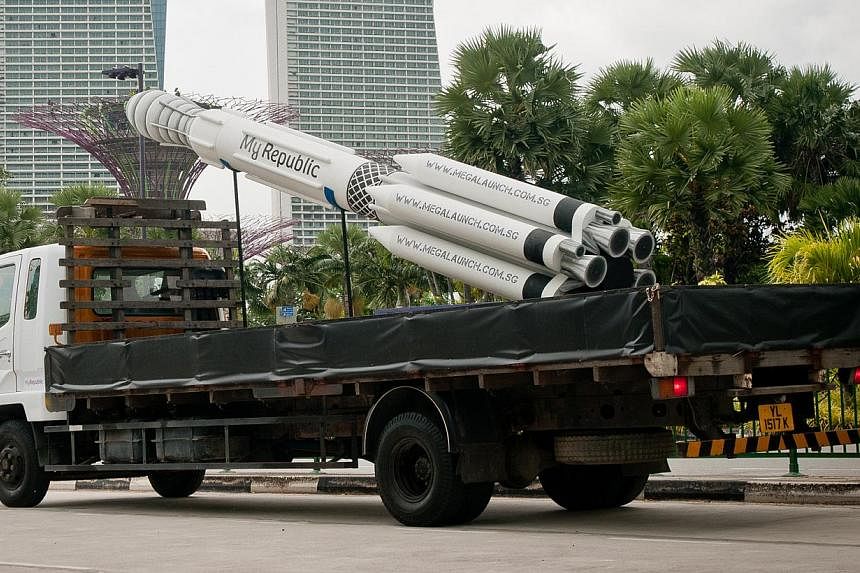Singapore has shot up the fixed broadband rankings.
An annual global survey by Akamai Technologies, a United States-based Internet specialist, highlighted Singapore's achievement in becoming the fourth country in the Asia-Pacific region to have an average connection speed above the 10 Mbps "high broadband" threshold, joining Japan, Hong Kong and South Korea. Years ago the thought of joining this elite club was unthinkable.
The best is yet to come. Singapore's average connection speed is growing much faster than the other three high performers, and these rankings do not even yet reflect recent market developments which will further improve Singapore's standing.
These rankings are worth more than mere bragging rights. Telecommunications is not a normal industry - it is an enabler industry. In controlling the quality and pricing for nationwide connectivity, it dictates the pace of local innovation. In time, improvements such as the one observed by Akamai will spur start-ups in Singapore to forge the way in defining Smart Everything, and improve Singapore's current rank of 27 - out of 50 countries surveyed - by the World Startup Report.
With that type of stellar performance in fixed broadband, it is only natural to now ask how Singapore fares in mobile access.
In that same Akamai report, South Korea's 15.2 Mbps average mobile connection speed was found to be a whopping 3.5 times that of Singapore, which is 4.3 Mbps. To be fair, South Korea is the undisputed world leader, heads and shoulders above the rest. Ratings for Hong Kong and Japan are only 50 per cent higher than Singapore's. But that was precisely the situation in fixed broadband several years ago - a small group of elite countries in a league of their own, with Singapore on the outside looking in.
Market analysts regularly critique the lack of competition among the big three mobile operators here - SingTel, StarHub and M1 - pointing to price plans and service offerings that look too similar. Analysts consider this type of herd behaviour typical in three-operator markets globally; it is not unique to Singapore.
In June this year, the Infocomm Development Authority (IDA) initiated a public consultation on improving the competitiveness of the mobile market in Singapore. That consultation asked for feedback from potential new entrants. (Disclosure: MyRepublic has expressed interest to become a fourth mobile operator).
But could Singapore benefit from a fourth mobile telecom operator?
Opening up the possibility for a fourth mobile operator in Singapore is hardly new, with the IDA being on a 13-year mission to introduce one. But outside several MVNOs (mobile virtual network operators) which were either short-lived, such as Virgin Mobile, or had an insignificant market impact, there were no takers. Unlike a full-fledged mobile operator, MVNOs do not own mobile broadband infrastructure; they lease it at wholesale rates and sell to customers at retail prices.
Then, like now, conventional wisdom says that with 1.7 mobile phone subscriptions for each person (referred to as 170 per cent market penetration), the mobility market is already highly saturated. There is simply no room, the thinking goes, for a fourth mobile operator in Singapore.
So what has changed?
First, the foundation of any mobility network is a fixed network to link mobile towers. With the National Broadband Network now in place, reasonably priced fibre- to-anywhere has changed the rules on a critical building block needed to launch a mobile operator.
Second, advances in technology mitigate many of the traditional barriers for a new entrant.
Heterogeneous networks allow precious spectrum to be used far more efficiently, so that a new player can enter the market and be effective with far less spectrum than that currently tightly held by each of the three incumbents.
Also, cloud computing creates opportunities to streamline traditional telecom operations, which significantly alters the cost to deliver services.
Third, there is growing consensus that undermines the well- worn notion that with 1.7 mobile phones per person, there is simply no room for a fourth operator. The traditional view makes sense only if we measure the market in a traditional way - based on people holding phones.
But that logic is fast giving way to a new way of thinking about mobility markets - driven by the emergence of machine-to- machine (M2M). Under that universally accepted vision of the future, devices and not people, are going to be connected to the Internet.
The result: the 170 per cent will eventually grow to 600 per cent, then 1,000 per cent, then higher still, with Internet-enabled devices vastly outnumbering the number of people holding a mobile phone.
And as part of that transformation, the total market revenue available for mobile carriers will grow. How? Innovative mobile telco operators will tap the many potential customer use-cases that create economic value.
Internet-enabled sensors helping to care for the elderly will reduce costly in-home visits, for example. Internet-enabled cars with self-repairing capabilities will reduce trips to the service garage.
Nor is the Internet so saturated with apps and platforms that there is only inconsequential innovations left to discover. Well- known Net analyst Kevin Kelly recently argued in his article, You Are Not Too Late, that in terms of the Internet, change is still at the beginning of its beginning.
If we could journey 30 years into the future, he argues, we would realise that most of the greatest products and services running the lives of citizens in 2044 were not invented until after 2014.
In other words, the coolest, greatest innovations are waiting to be discovered by entrepreneurs the world over.
By making the mobility market more competitive, we double and triple the chances of those new innovative business models being incubated, launched, polished and catapulted into the world, from here.
Greg Mittman is vice-president and Lawrence Chan head of business development at broadband services provider MyRepublic.

